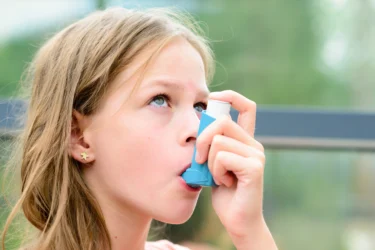Wheatgrass Juice: Uses, Benefits, Side Effects and More!
By Dr Smita Barode +2 more

Get,

to manage your symptom
Get your,


4 Cr+ families
benefitted

OTP sent to 9988776655



You’ve successfully subscribed to receive
doctor-approved tips on
Whatsapp

Get ready to feel your best.

Hi There,
Download the PharmEasy App now!!


Register to Avail the Offer
Send OTPBy continuing, you agree with our Privacy Policy and Terms and Conditions

Hi There,
Sign up on PharmEasy now!!
Trusted by 4 crore+ families

OTP sent to 9988776655



You have unlocked 25% off on medicines




Code: NU25
By Dr Smita Barode +2 more
Table of Contents
Have you heard about wheatgrass? As the name suggests, it is a grass of the common wheat plant, scientifically known as Triticum aestivum. The young grass of the common wheat is freshly juiced to obtain the wheatgrass juice. Though a humble drink, wheatgrass juice may serve as a powerhouse as it contains multiple nutrients like vitamins, amino acids, chlorophyll and other enzymes. The use of wheatgrass juice is referred to as “Green Blood Therapy”. Wheatgrass juice contains all the nutrients and is believed to be a completely natural nutrition source. It is slowly gaining popularity in India, but wheat grass juice benefits have been known in Western countries for a long time. As the health-conscious community raves about the benefits of wheatgrass juice, let’s learn about its benefits in detail1.

The nutrients in wheatgrass juice are as follows:
Nutrient content of wheatgrass juice per 100 ml2
Wheatgrass juice may help us in many ways because of the following properties that it might possess:
Green blood therapy involves drinking wheatgrass juice and may potentially benefit in managing various long-term diseases as and when recommended by a doctor. The advantage of wheatgrass juice is that it is crude chlorophyll, so it may be relatively safer1. Some of the potential uses of wheatgrass juice are as follows:

Wheatgrass juice may help with many blood-related diseases. Wheatgrass is known as green blood because of its structural similarities to haemoglobin. Therefore, it might help with anaemia. Furthermore, it might also help reduce uric acid in the blood and might lower blood pressure, atherosclerosis (blood vessels clogged by fat) and internal haemorrhage (bleeding)1. However, it should be used only after being prescribed by a doctor.

Drinking wheatgrass juice might help with diseases affecting the respiratory system, like asthma and bronchitis. Asthma is a stubborn disease that doesn’t respond to most treatments, but drinking wheatgrass juice might help with asthma symptoms. It may also help get rid of a common cold too. In addition, wheatgrass juice may aid in dealing with bronchitis1. However, further study is needed to prove such claims. Therefore, you should consult a doctor and take their advice regarding its use.

Wheatgrass juice may help in dealing with nausea, vomiting, flatulence, indigestion, stomach ulcers and worm infestation of the stomach. The best effect of wheatgrass juice may be on stomach-related disturbances. In addition to the above-stated problems, wheatgrass juice might be used for managing constipation and bleeding of the rectum as well, as it may act as a laxative and bulk-up stools, thus aiding its easy passing. It might also help in cases like chronic constipation, bleeding piles, ulcerative colitis, and colon (a part of the small intestine) problems1. However, the decision of whether wheatgrass juice can be used for a condition is at the discretion of your Ayurvedic physician basis your consultation with them.

It was seen in studies that wheatgrass juice might have the properties that help in avoiding tooth decay. It might also help with sore throat and pyorrhoea. Thus, its use as a mouthwash has been suggested, but there is insufficient data to do so. Moreover, wheatgrass juice might help to deal with toothache1. However, you should consult a dentist if you have any problem related to teeth as they can help you better.
Wheatgrass juice is a rich source of various nutrients. The potential use of wheatgrass juice is to sweeten the breath and tighten the gums. It may also help in maintaining overall oral health.
Dr. Siddharth Gupta, B.A.M.S, M.D (Ayu)

As wheatgrass juice might have the property of purifying blood, it might also help in certain conditions of the skin. Wheatgrass juice benefits for skin include the potential to help manage itching skin. It might also help the skin from infections and rotting (gangrene); and from skin toughening, blister formation and itching, as seen in eczema. Furthermore, it might help with acne (pimples, boils, cuts, wounds and bites1. However, there is a need for more exploration in the form of research to prove the potential of wheatgrass juice for skin. Therefore, it is best to follow your doctor’s advice.
Along with managing various skin conditions, wheatgrass juices might have anti-ageing effects on the skin. It might be used for maintaining a youthful look, reducing dark circles, and purification of blood3.
Dr. Rajeev Singh, BAMS

Wheatgrass juice might help to deal with joint problems due to its property of alleviating inflammation. It might help in diseases of bone associated with inflammation, like osteoarthritis. In addition, it might also help in the faster healing of bone fractures and pain. Furthermore, wheatgrass juice might help from gout, a disease affecting the joints1. However, more research is needed to prove its efficiency.

Wheatgrass juice might help in the following:
However, much more extensive research is required on the properties and benefits of wheat grass juice to prove its potential use for health. The research should be in the form of studies and experiments in laboratories, with animals and on humans. Therefore, you should consult your Ayurvedic physician before using wheatgrass juice.
To prepare fresh wheatgrass juice at home,
You can also use an electric mixer to prepare wheatgrass juice1. You might also find readily available wheatgrass juice in the market.
You must consult a qualified doctor before taking any herbal supplements. Do not discontinue or replace an ongoing treatment of modern medicine with an Ayurvedic/herbal preparation without consulting a qualified doctor.
There is insufficient data regarding the side effects of wheatgrass juice. There is a need for extensive research on animals and humans to reach conclusions about its side effects. Therefore, you should consult a doctor about using wheatgrass juice.
Also Read: Watermelon Juice: Uses, Benefits, Side Effects and More!
Anything in excess and without supervision might cause harm. Likewise, wheatgrass juice should also be taken under the advice and supervision of an Ayurvedic physician. Special care with more frequent consultation with your doctor is ideal if you are pregnant, breastfeeding, elderly or have a child.
Also Read: Neem Juice: Uses, Benefits, Side Effects, and More!
There isn’t enough data suggesting the adverse interactions of wheatgrass juice with other drugs. There is a need for extensive research to claim the safety of wheatgrass juice. Kindly do not self-medicate or discontinue your ongoing treatment. You must consult your doctor and ask for their advice about using wheatgrass juice. They will be the best judge of your condition and will guide you best.
Also Read: Lady Finger : Uses, Benefits, Side effects and More!
There is a requirement for more research on wheatgrass to know about its side effects. There is insufficient data to state its side effects or to state there aren’t any. You should consult a doctor for further help.
Wheatgrass juice has carbohydrates, proteins, various minerals, vitamins, amino acids, chlorophyll and enzymes, which may impart good properties to wheatgrass juice. These properties might potentially help with infections, wounds, detoxification, etc1,2. However, extensive research is required to prove its effects.
There are no valid reports stating the use of wheatgrass juice for hair. More research is needed to prove the effect of wheatgrass juice on the hair.
Wheatgrass juice might have the potential to help deal with itching skin, eczema (toughening, blistering and itching of the skin), and rotting of skin (gangrene). It might also help wound healing and manage cuts, burns, bites, etc1. However, there is a need for more research.
No. You should consult an Ayurvedic physician for taking wheatgrass juice or any other herb for medicinal purposes. Kindly consult an Ayurvedic physician; they will prescribe and guide you regarding the appropriate treatment for your condition. Please do not self-medicate or discontinue any treatment. Consult expert doctors for their opinion. However, more studies are required to know about the use of wheatgrass juice for the liver.
Drinking wheatgrass juice is called green blood therapy. Wheatgrass juice is structurally similar to haemoglobin. Therefore, it is referred to as ”Green Blood”. Physicians might recommend green blood therapy to deal with various long-term diseases1.
Wheatgrass juice might be prescribed to you by your Ayurvedic physician for asthma as a few studies show that it might help to deal with asthma1. However, there is a need for more research.
No. There are no valid reports claiming that wheatgrass juice can help with leg pain. However, there is a need for more research to claim it as a fact or to dismiss it entirely.
1. Mujoriya R, Babu Bodla KIET R. A study on wheat grass and its Nutritional value. 2011 [cited 2022 Feb 4]; Available from: https://www.researchgate.net/publication/279370893_A_study_on_wheat_grass_and_its_Nutritional_value
2. Rodríguez FC, Gallagher E, Rai DK, Burgess CM. Nutritional and physiochemical properties of wheatgrass juice and preservation strategies. Food Chem Advances. 2022;1:100136. doi:10.1016/j.fca.2022.100136. Available from: https://www.sciencedirect.com/science/article/pii/S2772753X22001241
3. Bangera D, Sikalgar FR, Shetty PP, Alva R, Paul Y, Muralidharan S. Therapeutic potential of wheatgrass juice: A comprehensive narrative review. J Pharm Bioallied Sci. 2025 May;17(Suppl 1):S152-S154. doi:10.4103/jpbs.jpbs_179_25. PMCID: PMC12156747. Available from: https://pmc.ncbi.nlm.nih.gov/articles/PMC12156747/
Disclaimer: The information provided here is for educational/awareness purposes only and is not intended to be a substitute for medical treatment by a healthcare professional and should not be relied upon to diagnose or treat any medical condition. The reader should consult a registered medical practitioner to determine the appropriateness of the information and before consuming any medication. PharmEasy does not provide any guarantee or warranty (express or implied) regarding the accuracy, adequacy, completeness, legality, reliability or usefulness of the information; and disclaims any liability arising thereof.
Links and product recommendations in the information provided here are advertisements of third-party products available on the website. PharmEasy does not make any representation on the accuracy or suitability of such products/services. Advertisements do not influence the editorial decisions or content. The information in this blog is subject to change without notice. The authors and administrators reserve the right to modify, add, or remove content without notification. It is your responsibility to review this disclaimer regularly for any changes.
Comments

Leave your comment...
You may also like
Comments